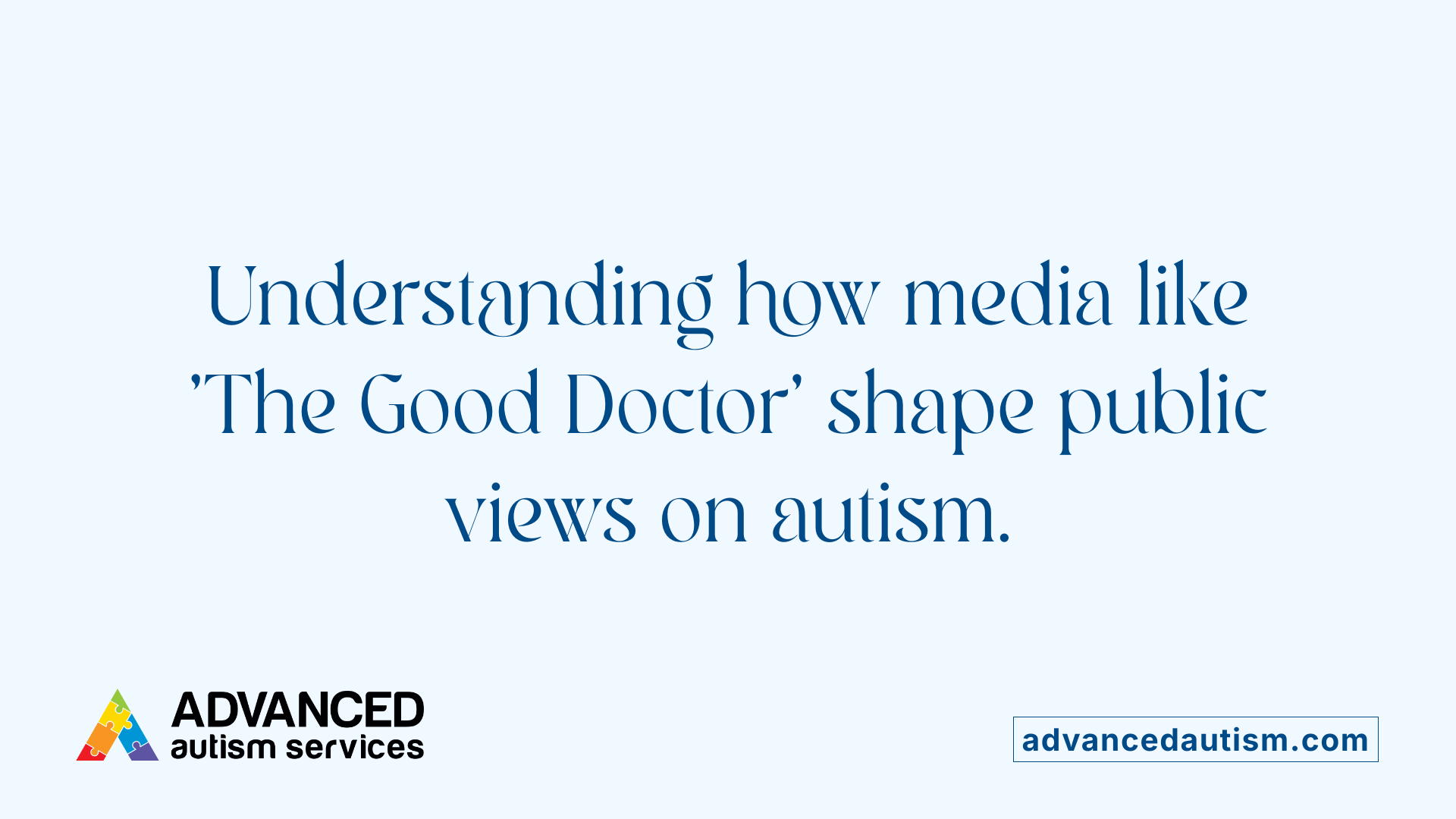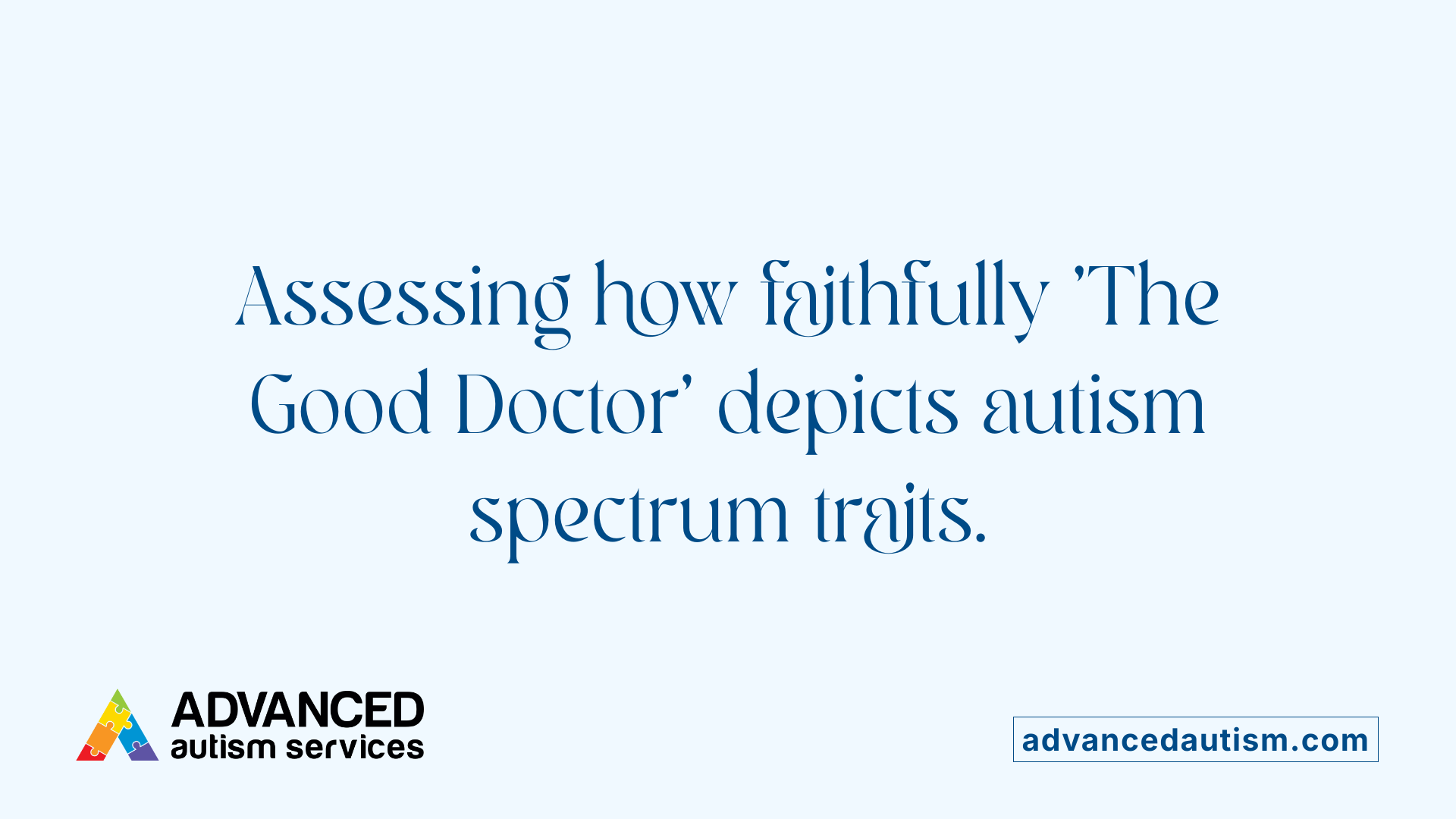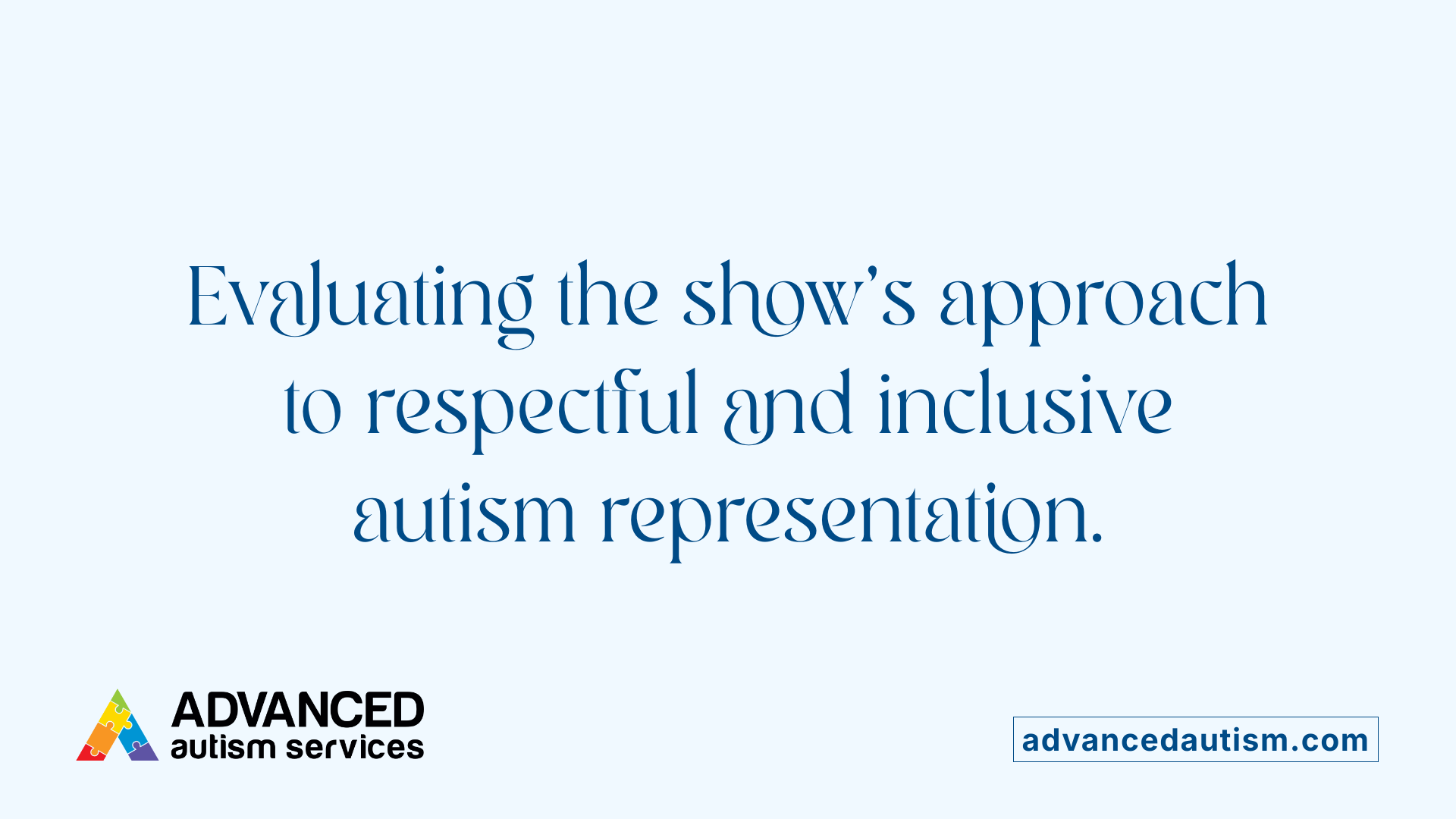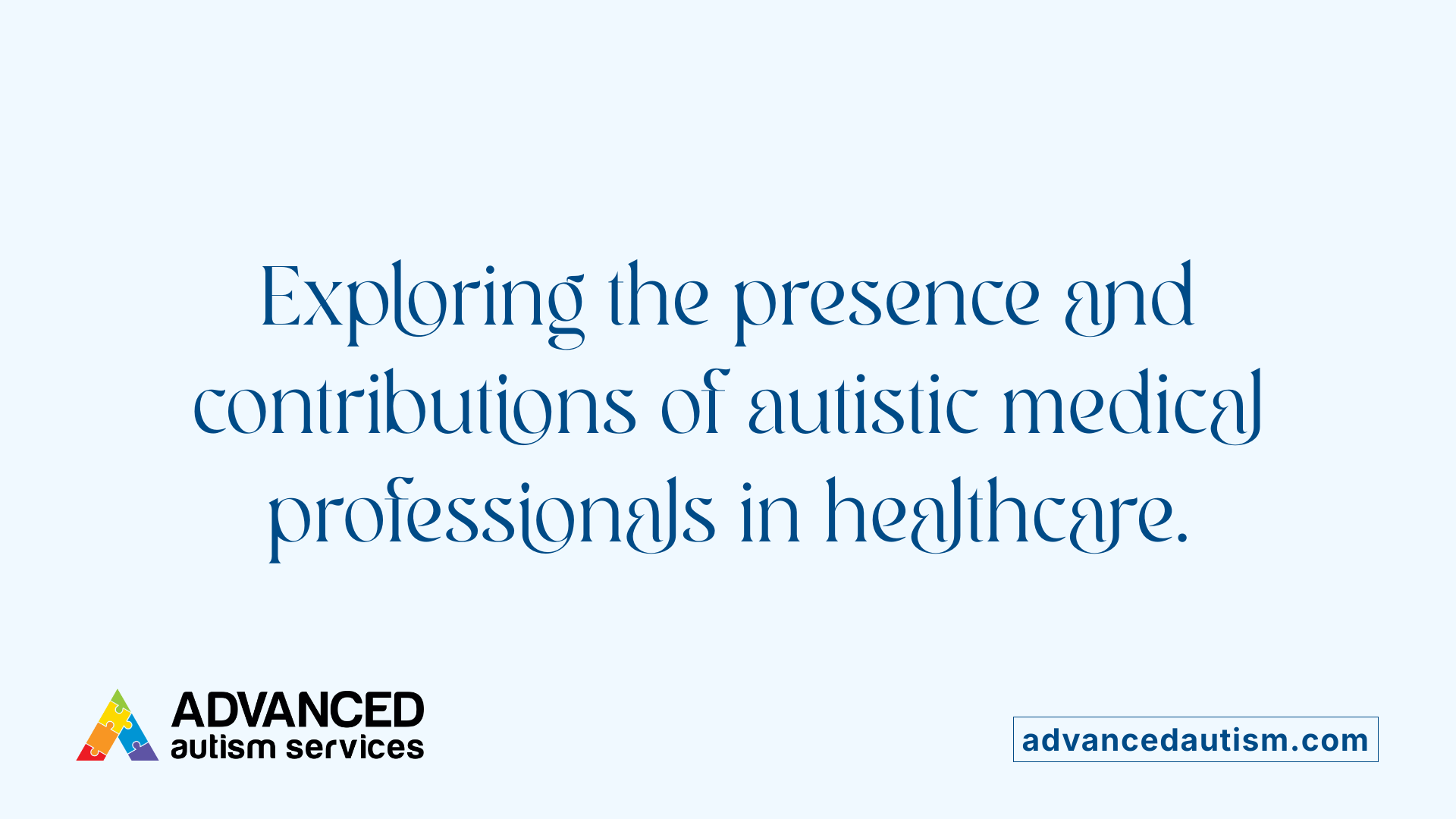Unpacking Autism Portrayal in Popular Medical Drama
'The Good Doctor' has become a significant cultural touchstone for autism awareness, centered around the character of Dr. Shaun Murphy. While it has been praised for highlighting some aspects of autism and sparking important conversations, there remains debate over the authenticity and depth of its depiction. This article explores whether the show truly portrays autism accurately, how it influences public perceptions, and what the broader implications are for media representation.
Overview of Shaun Murphy's Character in 'The Good Doctor'
Character background
Shaun Murphy is a fictional character featured in the TV series 'The Good Doctor.' Portrayed by Freddie Highmore, Shaun is a young surgical resident working at San Jose St. Bonaventure Hospital. His character is inspired by real stories of individuals with autism and savant syndrome. His background includes growing up in Casper, Wyoming, where he developed a remarkable memory and extraordinary skills in medicine, but also faced significant social challenges.
The show was created by showrunner David Shore, with the goal to depict a realistic and respectful portrayal of autism while highlighting Shaun’s professional competence and personal vulnerabilities. Throughout the series, Shaun struggles with social cues, sensory sensitivities, and routines, but also demonstrates exceptional medical talents.
Traits and behaviors
Shaun Murphy exhibits classic traits associated with autism spectrum disorder. He often experiences social awkwardness, has difficulty with eye contact, and displays repetitive behaviors such as hand-playing during stressful moments. Sensory sensitivities are also portrayed, especially distractions caused by loud noises or overstimulation.
Despite these challenges, Shaun demonstrates deep empathy and genuine care for his patients and colleagues, challenging stereotypes that people with autism lack compassion. His unique ability to focus intensely on medical cases makes him an invaluable member of his surgical team.
The character sometimes displays ignorance and misunderstandings, especially in interactions involving social norms or diverse identities. His character also shows resilience and independence, embodying a multifaceted view of individuals on the autism spectrum.
Representation of autism and savant syndrome
The series attempts to portray autism and savant syndrome as parts of a holistic character profile. Shaun’s talents are depicted as extraordinary, such as exceptional memory and pattern recognition, which align with the savant aspect.
The show emphasizes sensory sensitivities, like distraction caused by sounds, to reflect authentic autism experiences. Experts and consulting groups have been involved in the show's creation to ensure a level of authenticity, although some critics argue that the portrayal still relies on stereotypes occasionally.
It's important to note that Shaun Murphy is a fictional character played by a neurotypical actor, Freddie Highmore. The portrayal draws on extensive research, expert consultation, and a desire to promote awareness about autism, although it does not encompass the full diversity of autism experiences.
This nuanced character aims to foster understanding, challenge misconceptions, and promote the inclusion of neurodiverse individuals in society.
| Aspect | Details | Additional Notes |
|---|---|---|
| Autism traits | Social challenges, routines, sensory sensitivities | Based on common autism characteristics |
| Savant skills | Exceptional memory, medical talents | Reflects savant syndrome aspects |
| Actor | Freddie Highmore | Does not have autism but researched extensively |
| Representation goals | Accurate, respectful, awareness-raising | Consulting groups involved |
| Criticisms | Stereotypes, need for more diversity | Autistic advocates' viewpoints |
By balancing these elements, 'The Good Doctor' presents a character who embodies both the difficulties and unique strengths associated with autism, encouraging viewers to see beyond stereotypes.
Media Depiction and Its Impact on Public Perception of Autism

What is the general media depiction of autism as shown in 'The Good Doctor' and how does it influence public perceptions?
'The Good Doctor' features Shaun Murphy, a young surgeon with autism spectrum disorder (ASD) and savant syndrome, as its main character. Played by Freddie Highmore, the show highlights his exceptional medical skills alongside challenges like social awkwardness, sensory sensitivities, and routine dependence. This portrayal aims to both educate and foster empathy among viewers.
The series has boosted awareness about autism, highlighting authenticity by including traits like sensory distractions and non-verbal cues. It also emphasizes Shaun’s empathy and care, challenging stereotypes that all autistic people lack emotional understanding. The show's popularity, remaining among the top-rated new shows during its initial seasons, indicates a broad impact with positive educational effects.
However, the portrayal has sparked criticism. Experts and autistic advocates caution that it risks reinforcing stereotypes by focusing on savant abilities and simplifying complex social behaviors. Sociocultural commentators like Sarah Kurchak point out that media often rely on misconceptions, which can lead to the perception that autism equates primarily to exceptional talents. Further, the fact that Freddie Highmore, a neurotypical actor, plays Shaun raises questions about authentic representation.
The show’s attempt to humanize and normalize autistic experiences is a step forward. Still, critics argue the depiction could benefit from more nuanced portrayals that reflect the full spectrum of autism’s variability. The inclusion of autistic actor Kayla Cromer in the final season was notable, yet overall, the series remains a mix of progress and stereotypes.
Media like 'The Good Doctor' greatly influence public perceptions by shaping narratives about autism. When done carefully, they can educate, promote understanding, and foster acceptance. But if oversimplified or stereotyped, they risk reinforcing misconceptions that hinder genuine awareness.
In summary, while 'The Good Doctor' has contributed positively by raising awareness and depicting both challenges and talents of autistic individuals, ongoing efforts are needed to present autism in a more balanced and comprehensive manner. Authentic representation and diverse stories will better reflect the real experiences of the autistic community, shaping public perceptions toward more acceptance and inclusion.
Authenticity and Accuracy of Autism Portrayal in the Series
 The series 'The Good Doctor' makes a significant effort to present autism with a degree of authenticity. The character Dr. Shaun Murphy, portrayed by Freddie Highmore, is based on extensive research and consultations with autism experts. Highmore’s immersive preparation included studying real-life stories and behaviors of individuals with autism, which helped shape a nuanced performance.
The series 'The Good Doctor' makes a significant effort to present autism with a degree of authenticity. The character Dr. Shaun Murphy, portrayed by Freddie Highmore, is based on extensive research and consultations with autism experts. Highmore’s immersive preparation included studying real-life stories and behaviors of individuals with autism, which helped shape a nuanced performance.
The show aims to showcase traits such as sensory sensitivities, social awkwardness, and the tendency for routines—elements authentically associated with many on the autism spectrum. For instance, Shaun’s distraction by sounds and hand-playing during stressful moments reflect real experiences of sensory overload and coping mechanisms.
However, some critics and members of the autism community have noted that the portrayal occasionally leans into stereotypes. For example, Shaun’s savant syndrome, which grants him extraordinary skills, is a common but not universal aspect of autism and can mislead viewers into overgeneralizing this trait. This reliance on recognizable tropes can oversimplify the wide variety of autism experiences.
Overall, 'The Good Doctor' balances educational intent with entertainment, providing a portrayal that is realistic in many aspects but still limited in capturing the full diversity of autism. The series continues to spark conversations about what authentic representation looks like and how media can better reflect the complex realities of autistic individuals.
Representation of Autism: Respectful and Inclusive?

Does the show 'The Good Doctor' depict autism in a way that is respectful and representative?
The series makes a considerable effort to portray Shaun Murphy as a multidimensional character, emphasizing both his extraordinary skills and his social and sensory challenges. This balanced approach aims to go beyond stereotypes often seen in media, showcasing autism as a spectrum with diverse traits.
A key aspect of this effort is the show's deliberate avoidance of 'inspiration porn'—a term used to describe the portrayal of disabled individuals solely to inspire able-bodied viewers. Instead, Shaun is depicted as a complex professional, a person whose talents and struggles provide a nuanced view of autism.
However, the authenticity of this representation has limitations. The show's autism consultant was non-autistic, raising questions about how well the portrayal captures the authentic experiences of autistic individuals. While Freddie Highmore, who is neurotypical, plays Shaun and researched extensively, including consulting experts and drawing from personal connections, the lack of autistic writers and cast members initially affected the genuineness of the portrayal.
In later seasons, the casting of autistic actor Kayla Cromer as an autistic character was a positive step toward more genuine representation. Nonetheless, critiques highlight that the series still sometimes relies on stereotypes and misconceptions, particularly regarding complex topics like trans issues and social ignorance.
Overall, 'The Good Doctor' has advanced autism representation in mainstream media but still faces challenges in fully capturing the diverse realities of autistic people. Efforts continue to improve authenticity, emphasizing the importance of including autistic voices in storytelling.
| Aspect | Efforts Made | Limitations | Impact |
|---|---|---|---|
| Avoiding 'Inspiration Porn' | Focus on Shaun's abilities and personal struggles | Occasional reliance on stereotypes | Raises awareness without condescension |
| Inclusion of Autistic Voices | Autistic actor in later seasons, consulting experts | Initial lack of autistic writers and cast | Progress in authenticity and visibility |
| Representation Challenges | Highlighting strengths and challenges | Ongoing misconceptions and stereotypes | Sparks ongoing discussion and improvement |
This evolution reflects an understanding of the importance of portraying autism with accuracy and respect, promoting awareness and acceptance while acknowledging areas for further growth.
Is Shaun Murphy’s Autism Depiction Consistent and Realistic?
Character traits over time
Shaun Murphy’s portrayal as an autistic surgeon reflects many aspects associated with autism, such as social awkwardness, difficulty with eye contact, and sensory sensitivities. Over the course of the series, viewers observe these traits consistently, illustrating Shaun’s challenges in social interactions and his unique way of processing sensory input. Despite these difficulties, the show emphasizes his extraordinary medical skills, including his sharp memory and analytical abilities, emphasizing that individuals on the spectrum can have remarkable talents.
The series also highlights Shaun’s routines and need for predictability, which are typical for many with autism. His moments of frustration or distraction due to sound or touch reinforce the authenticity of his sensory sensitivities. These traits have been depicted with a level of consistency that helps the audience understand his lived experiences.
Limitations due to stereotypes
However, critics and members of the autistic community have pointed out that some portrayals rely heavily on stereotypes, especially the emphasis on savant syndrome. The show often presents Shaun as having extraordinary talents that are not representative of most autistic individuals, which can contribute to misconceptions.
Moreover, some behaviors depicted, such as ignorance or transphobia, do not align well with typical autistic behavior, which can perpetuate inaccuracies. The portrayal of Shaun sometimes leans into the 'autistic savant' archetype, which is a limited view and does not reflect the wide diversity within autism.
Progress and remaining critiques
Despite these limitations, the series has made progress by showing Shaun as a complex character with emotions, empathy, and personal growth. His interactions with colleagues demonstrate his capacity for care and understanding, challenging stereotypes that autism lacks emotional depth.
Yet, critiques remain about the show's need for more nuanced and diverse representations of autism. Experts involved in the show's creation have emphasized consulting with autism professionals, but the portrayal still falls short of capturing the full spectrum of autism experiences. Additionally, including an autistic actor in later seasons aimed to bring more authenticity, but the overall series still faces ongoing questions about realism.
In conclusion, while 'The Good Doctor' offers a relatively consistent portrayal of Shaun’s traits over time, its reliance on certain stereotypes and the focus on savant abilities limit its overall realism. Still, it serves as a conversation starter about autism awareness and the importance of depicting diverse experiences.
| Aspect | Description | Notes |
|---|---|---|
| Traits Shown | Social difficulties, sensory sensitivities, routines, strengths | Consistent depiction overall |
| Stereotypes | Overemphasis on savant syndrome, simplified behaviors | Critics point out limitations |
| Representation Progress | Inclusion of autistic actor, nuanced interactions | Progress but still imperfect |
| Audience Impact | Raises awareness, prompts discussion | Mixed reviews on accuracy |
This ongoing dialogue highlights the importance of authentic storytelling that respects the diversity within the autism community.
Are Real-Life Autistic Medical Professionals Common?

Are there any real-life medical professionals on the autism spectrum, like Shaun Murphy?
Yes, a notable number of medical professionals are on the autism spectrum. Estimates suggest that approximately 1% of doctors in fields such as general practice and psychiatry are autistic. Historically, many of these professionals have kept their diagnosis private due to stigma, but increased public awareness and advocacy efforts are encouraging more openness.
Individuals on the spectrum in medicine often exhibit strengths that can be advantageous in clinical settings. These include a keen attention to detail, high levels of persistence, and a dedicated focus on their work. These traits can enhance diagnostic accuracy and patient care.
However, they may also face challenges, such as sensory sensitivities that make certain environments overwhelming, or difficulties with executive functioning impacting organization and multitasking. Support systems and workplace accommodations are vital in helping autistic medical professionals thrive.
Overall, the presence of autistic professionals in medicine highlights the importance of recognizing neurodiversity as a valuable asset within the healthcare industry.
The Series' Consistency and Realism in Depicting Autism in a Medical Setting

Traits shown by Shaun
In 'The Good Doctor,' Shaun Murphy is portrayed with distinctive autistic traits such as social awkwardness, difficulty with typical social cues, and sensory sensitivities. Fans and critics alike notice his challenges with eye contact and hand-playing during stressful situations, which reflect common features associated with autism. Despite these challenges, Shaun displays extraordinary abilities like exceptional memory and focus, which are often linked to savant syndrome.
The show's depiction aims to balance realism with storytelling elements, emphasizing Shaun’s blend of obstacles and strengths. His routines and sensory sensitivities, especially reactions to sounds, are based on authentic autism experiences, enhancing the show's credibility.
Comparison with real-life autistic doctors
While there are indeed autistic professionals in various fields, including medicine, the portrayal of Shaun as an autistic doctor with savant skills is somewhat idealized. Real-life autistic doctors may not always demonstrate such extraordinary abilities, and their experiences can be more varied. Nonetheless, Shaun's character has helped to challenge stereotypes—showing that autistic individuals can excel in complex, high-pressure environments like healthcare.
Autistic doctors in reality often face obstacles related to social interactions and sensory issues, but many also possess unique talents and perspectives that benefit their work. Media representations like Shaun’s can inspire and inform, provided they are nuanced and avoid overgeneralization.
Potential for accurate representation
Overall, the depiction of Shaun Murphy offers a mixture of authenticity and dramatization. The show's creators consulted experts and incorporated research to craft a character that embodies certain traits of autism. However, critics from autistic communities note that some behaviors are exaggerated or stereotypical, and the show sometimes overlooks the diversity within the autism spectrum.
Efforts to include autistic actors and consultants are steps forward, emphasizing the importance of authentic representation. Yet, ongoing dialogue and more diverse portrayals are necessary to truly reflect the wide range of experiences among autistic individuals.
| Trait | Description | Note |
|---|---|---|
| Social awkwardness | Difficulty with social cues and interactions | Common but varies among individuals |
| Sensory sensitivities | Overreacting to sounds, lights, textures | Based on real autism experiences |
| Exceptional skills | Memory, focus, specialized talents | Varied widely among autistic individuals |
| Challenges in routines | Preference for routines, difficulty adapting | Frequently reported in autism |
| Empathy and care | Demonstrates compassion, countering stereotypes | Positive portrayal encouraging understanding |
The series’ portrayal, while not perfect, sparks vital conversations about neurodiversity and possible pathways for more authentic storytelling in future media.
Conclusion: Understanding Neurodiversity Through Media
Progress made
Media representations like Shaun Murphy in 'The Good Doctor' have played a significant role in raising awareness about autism. By showcasing a character with autism who is talented, empathetic, and capable, the series helps challenge common stereotypes and promotes a more nuanced understanding of neurodiversity.
The inclusion of autistic characters played by autistic actors, such as Kayla Cromer in the final season, signals a positive step towards authentic representation. Consulting experts on autism during production has also contributed to portrayals that aim to be respectful and realistic, fostering greater public empathy and awareness.
Limitations of current portrayals
Despite these advancements, portrayals often still rely on stereotypes or include inaccuracies that can mislead viewers. Critics, such as Sarah Kurchak, have pointed out that shows like 'The Good Doctor' sometimes portray autism through a narrow lens, emphasizing savant skills or social challenges in ways that do not reflect the full diversity of experiences.
Additionally, some depictions, including certain behaviors or social interactions, may not align with typical autistic behaviors, which can inadvertently perpetuate misconceptions. The reliance on neurotypical actors to portray autistic characters remains an issue for authenticity.
Path forward for authentic representation
The future of autism portrayal in media should involve deeper collaboration with autistic individuals, ensuring stories are driven by authentic voices. Expanding casting choices to include more autistic actors, and developing narratives that reflect the spectrum's broad range of experiences, will enhance realism.
Educational efforts and ongoing critique should focus on dispelling myths, embracing neurodiversity, and emphasizing individual strengths alongside challenges. Media has the power to transform perceptions; with more inclusive practices and careful storytelling, it can truly serve as a tool for understanding and acceptance.
Fostering Genuine Understanding of Autism in Media
While 'The Good Doctor' has played a pivotal role in raising awareness and promoting conversations about autism, its portrayal of Shaun Murphy serves as both an educational tool and a reminder of the ongoing need for more nuanced, authentic, and inclusive representation. Accurate depiction requires involving autistic individuals in storytelling, moving beyond stereotypes, and celebrating the diversity within the autism spectrum. With continued efforts and increased visibility of autistic voices, media can foster genuine understanding and acceptance of neurodiversity, ultimately enriching societal perceptions and experiences.
References
- My review of 'The Good Doctor' as an adult with autism
- The Good Doctor Autism Portrayal Examined - AutismCOE
- Good Riddance to The Good Doctor | TIME - Time Magazine
- Shaun Murphy: Autism Representation in "The Good Doctor"
- Shaun Murphy (The Good Doctor) - Wikipedia
- A Critical Autism Analysis of The Good Doctor | Blossom ABA
- Autistic Adults Review The Good Doctor - Autism Ontario
- Doctors with autism speak out against stigma | The Transmitter



